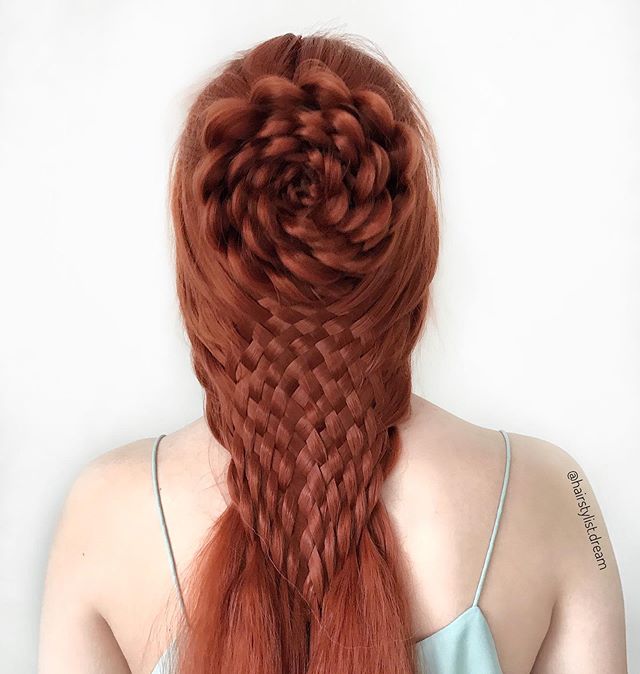A challenge that many people face regarding their hair is finding a style that really suits them. There are usually many factors to consider, such as face shape, hair color, fashion, taste, etc. But beyond all these underlined factors, it’s very important to know your hair type, to help you determine not only how to properly take care of it, but also know the styles that can go well with your hair type.
When we talk about types of hair, we’re usually referring to its curl pattern. Your hair type is determined by the shape of your hair follicles. Different follicles produce different hair types, from poker-straight to tightly-curled. Knowing your hair type should give you a better understanding of your hair’s natural characteristics and can even influence the way you choose to style and care for it.
There are four broad hair-type categories – straight, wavy, curly and coiled – and three further subcategories for each. If you’re trying to determine which category your hair falls into make sure you wash it first – so it’s completely free from styling products – then closely examine each strand in the mirror.

- Straight hair
Straight hair has no natural curl to it. Natural oils from the scalp tend to move more easily down the length of each strand, which can give straight hair an appealing natural glow. On the other hand, this can lead to greasy looking locks. Dry shampoo should help to cleanse oily hair without adding to the problem.
a. Type 1A
The least common hair type, 1A hair is extremely fine and perfectly straight. Consequently, it can look a bit flat and limp and might prove difficult to style. Dry shampoo can be your ally in the fight against excessive oil and thick hair products that might weigh your hair down are best avoided.
b. Type 1B
1B hair is still pretty straight but tends to have a bit more body and a slight bend towards the end of each strand. 1B hair should hold a curl more easily than 1A hair.
c. Type 1C
Predominantly straight, 1C hair is typically very thick and typically has a suggestion of waves without falling into the wavy category. Individual strands are relatively thick and coarse. An attractive tousled look comes naturally to 1C hair.
- Wavy Hair
Naturally, wavy hair should form an S shape. In many respects, wavy hair is a happy medium between straight and curly hair, but it isn’t always easy to tame.
a. Type 2A
This is a gently wavy hair type with a naturally tousled look. An S-shaped bend may just about be discernible but will be loosely defined. 2A hair tends to be straight from the roots to eye level, then gently wavy to the tips.
b. Type 2B
This naturally tousled hair type is similar to 2A but tends to be characterized by a more defined S shape, which can mean it’s harder to straighten. Frizz can become an issue with this category of hair so you’re likely to find yourself reaching for the anti-frizz serum.
c. Type 2C
Type 2C is characterized by more tightly defined waves (verging on curls) that often start closer to the crown of the head. Typically, this category of hair is pretty thick and prone to frizz. De-frizzing tools and products like diffusers and conditioners are your friends.
- Curly Hair
Curly hair is characterized by naturally defined ringlets that tend to prevent the scalp’s natural oils from spreading down the full length of the strands. This means curly hair is prone to dryness.
a. Type 3A
The loosest curly hair type, 3A may include a mixture of tight waves and loosely-formed loops. It should be possible to straighten this category of hair, but it can also be prone to heat damage.
b. Type 3B
Compared to 3A hair, curls in this category are more spiraled. Curls are abundant and springy and tend to start at the roots. Dryness can be an issue and moisturizing products are a must.
c. Type 3C
Characterized by tight, springy corkscrew curls, 3C hair is thick and prone to frizz. Products like leave-in conditioner can help in the fight against dryness and blow drying is best avoided.
- Coiled Hair
Coiled hair is coarse and kinky, without the discernible ringlets we associate with curly hair. Unlike curly hair, coiled hair tends to retain its shape when wet rather than straighten out into waves.
a. Type 4A
Type 4A hair is characterized by dense, tightly coiled curls that are usually around the diameter of a pen. Hair in this category tends to be extremely delicate, which means moisturizing products like butters, creams and masques. Unlike other coiled hair types, 4A hair falls down.
b. Type 4B
This type is characterized by tight zigzagging kinks. Defined curls can easily become overwhelmed by frizz and it can take a time-consuming regime to maintain well defined curls. Again, butters and curling creams can help.
c. Type 4C
The tightest category of coiled hair, 4C coils are extremely dense (think 70s afros) and it can be hard to discern any defined curls. This category of hair is quite fragile and hard to untangle, so cautious brushing is advised. Rich conditioners are advised and you may decide to ditch shampooing in favor of co-washing.
I really liked your article post.Really looking forward to read more. Really Cool.
Thanks for the blog.Really thank you! Really Cool.
Great, thanks for sharing this article post.Really thank you! Really Cool.